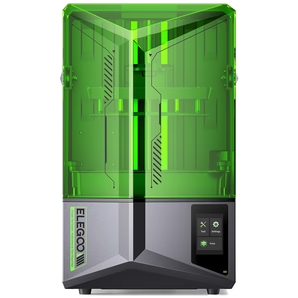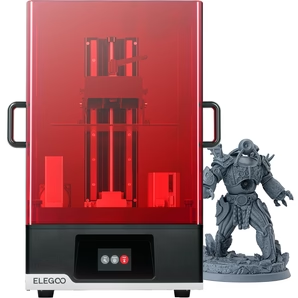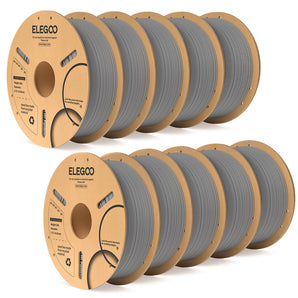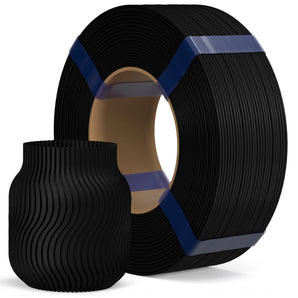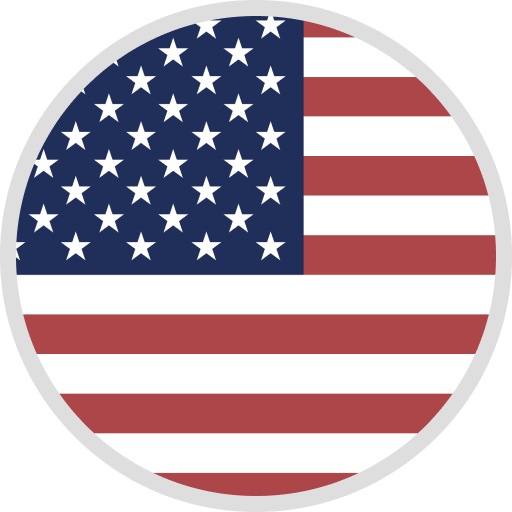In a world where the pace of product development dictates market success, 3D printing has emerged as the knight in shining armor for innovators and manufacturers alike.
Modern-day prototyping demands rapid turnaround and meticulous accuracy – expectations that 3D printing technologies not only meet but exceed.
This article delves into the symbiotic relationship between 3D print practices and prototype development, highlighting how this dynamic duo is accelerating product lifecycles and propelling ideas to market with unprecedented speed.
Spoiler Alert! The Neptune 4 Max would be, in our opinion, the best 3D Printer for Prototyping.
Article Outline:
- What is the Role of 3D Printing in Rapid Prototyping?
- How Has 3D Printing Transformed the Prototyping Process?
- Why is 3D Printing More Cost-Effective for Prototype Development?
- How Do Different Materials Influence 3D Printed Prototypes?
- Can 3D Printing Bridge the Gap Between Prototyping and Production?
- What Are the Prototyping Capabilities of Advanced 3D Printing Technologies Like SLA and SLS?
- How to Choose the Right 3D Printing Service for Your Prototyping Needs?
What is the Role of 3D Printing in Rapid Prototyping?
3D printing, or additive manufacturing, has become the bedrock of rapid prototyping in the modern manufacturing process.
By enabling the direct conversion of digital 3D models into tangible prototypes, 3D print technology effectively removes numerous complexities involved in traditional manufacturing.
Rapid prototyping with 3D printing isn't just about speed; it's also about realizing the potential of a design without investing in expensive tooling or machining.
The capability to iterate quickly with functional prototypes can drastically cut down product development cycles.
Engineers and designers use 3D printing to verify the form, fit, and function of their products efficiently. The flexibility offered by various 3d printing technologies—from desktop machines to industrial-grade printers—enables producing almost any geometry, no matter how complex.
Moreover, the power of 3D printing in the prototyping cycle stands evident in its ability to facilitate easy modifications.
A prototype can be reprinted with minimal cost impact after each iteration, reducing the product's time to market and ensuring the final product's quality and functionality.
How Has 3D Printing Transformed the Prototyping Process?
The prototyping process traditionally spanned several weeks or even months, but the advent of 3D printing for rapid prototyping has compressed those timelines into days.
The 3D printing service industry, now an integral component of prototyping, offers a variety of options, from fused deposition modeling (FDM) to selective laser sintering (SLS) and stereolithography (SLA). Each method uses a different approach to create layers and build the prototype one slice at a time.
By using CAD software, designers can send a digital 3D model to a 3D printer, which interprets the file and starts the manufacturing process—adding material layer by layer.
This streaming from digital to physical eliminates the need for intermediary stages, like making molds for injection molding, vastly improving lead times and allowing for hands-on testing and validation more promptly than ever before.
The 3D printing process also empowers designers to create more complex and detailed prototypes. In-house 3D printing or online 3d printing service allows small businesses and large companies alike to test out their concepts with excellent detail fidelity and mechanical properties that closely mimic those of final production items.
Why is 3D Printing More Cost-Effective for Prototype Development?
One of the most pronounced advantages of 3D printing is its cost efficiency, especially when it comes to prototype development.
Traditional manufacturing techniques such as injection molding require the creation of molds, which can be expensive and time-consuming.
In contrast, 3D printing does not need such up-front costs, making it much more economical for producing low-volume, high-variety parts typical of the prototyping stage.
Moreover, the additive manufacturing process inherent to 3D print tech minimizes material waste. Whereas subtractive processes like CNC machining remove material to create a part, 3D printing builds the part up from nothing, using only as much material as needed for the specific prototype.
Cost-effectiveness also extends to the iteration process.
Design changes that could lead to significant costs and delays in traditional settings can be implemented quickly and at a relatively low cost with 3D printing. This flexibility in the prototyping cycle not only saves money but also encourages innovation and experimentation.
How Do Different Materials Influence 3D Printed Prototypes?
The prototyping capabilities of 3D printing extend into a diverse array of materials that can meet the demands of virtually any product development project.
Materials for 3D printing range from thermoplastics like PLA and ABS to resins, nylon, and even metal 3d printing powders.
This variety allows developers to choose materials based on the mechanical properties required for their prototypes, such as durability, flexibility, and heat resistance.
With SLA 3D printing, for instance, designers can produce functional prototypes with prototyping resin that delivers a smooth surface finish suitable for detailed visual models. Alternatively, SLS 3D printing utilizes powders like nylon to produce end-use parts with robust mechanical properties and complex geometries.
Material choice plays a crucial role in the prototyping and production process, impacting the prototype's performance during testing and ultimately influencing the design decisions moving forward.
Can 3D Printing Bridge the Gap Between Prototyping and Production?
Rapid prototyping with 3D printing is increasingly becoming a method to bridge the transition from prototype to production.
As 3D printing technologies advance, it's possible to create not just prototypes but also functional, end-use parts that can stand in for or even replace traditionally manufactured items.
This convergence of prototyping and production through 3D printing allows businesses to launch products faster and more efficiently.
The same technology used to create a prototype can, in many cases, be utilized to manufacture the final product on a larger scale. For small batches or bespoke items, this can be an incredibly effective and cost-efficient method.
Additionally, 3D printing provides the manufacturing process's flexibility, offering a rapid response to market changes or customization requests without the need for significant alterations to production setups or increased inventory risk.
What Are the Prototyping Capabilities of Advanced 3D Printing Technologies Like SLA and SLS?
The prototyping technology offered by advanced 3D printing techniques such as SLA and SLS has elevated the quality and functional capabilities of prototypes.
SLA is particularly renowned for producing parts with high-resolution detail, smooth surface finishes, and the ability to replicate intricate features, making it ideal for prototypes that require a high level of aesthetic or surface quality.
On the other hand, SLS is known for its strength and durability, as the laser sintering process fuses powdered material to form solid structures.
SLS 3D printing can produce highly durable prototypes with complex geometries that would be challenging or impossible to create using traditional methods.
Both SLA and SLS are transforming the prototyping process, offering product development teams the opportunity to test and refine advanced functional prototypes that closely mirror the performance of their final intended products.
How to Choose the Right 3D Printing Service for Your Prototyping Needs?
With myriad options available for 3d printing service providers, choosing the best one to meet your prototyping needs can be challenging.
Start by considering the specifications of your prototype, such as size, resolution, material requirements, and intended use. Understanding these factors can guide you to the appropriate 3d printing technique and service.
It's also important to look at the turnaround time, cost per part, and expertise of the 3D printing service providers.
Some services may offer an instant quote for your project, helping you gauge the project's feasibility quickly. Additionally, check for customer reviews and examples of previous work to ensure the quality and reliability of the service.
Advanced 3D printing services might also provide added support in terms of designing for manufacturability, suggesting ways to optimize your design for the 3D printing process, and discussing potential material choices or post-processing options.
To wrap up, here are some key takeaways:
- 3D printing significantly cuts time and costs in prototyping.
- Rapid prototyping with 3D printing offers flexibility and supports iterative design.
- Material choice in 3D printing greatly affects a prototype's function and performance.
- Advanced technologies like SLA and SLS produce high-quality, functional prototypes close to final products.
- Choosing the appropriate 3D printing service is vital for project-specific requirements.
- 3D printing's rapid prototype delivery accelerates the transition from concept to production, improving product development time.


































